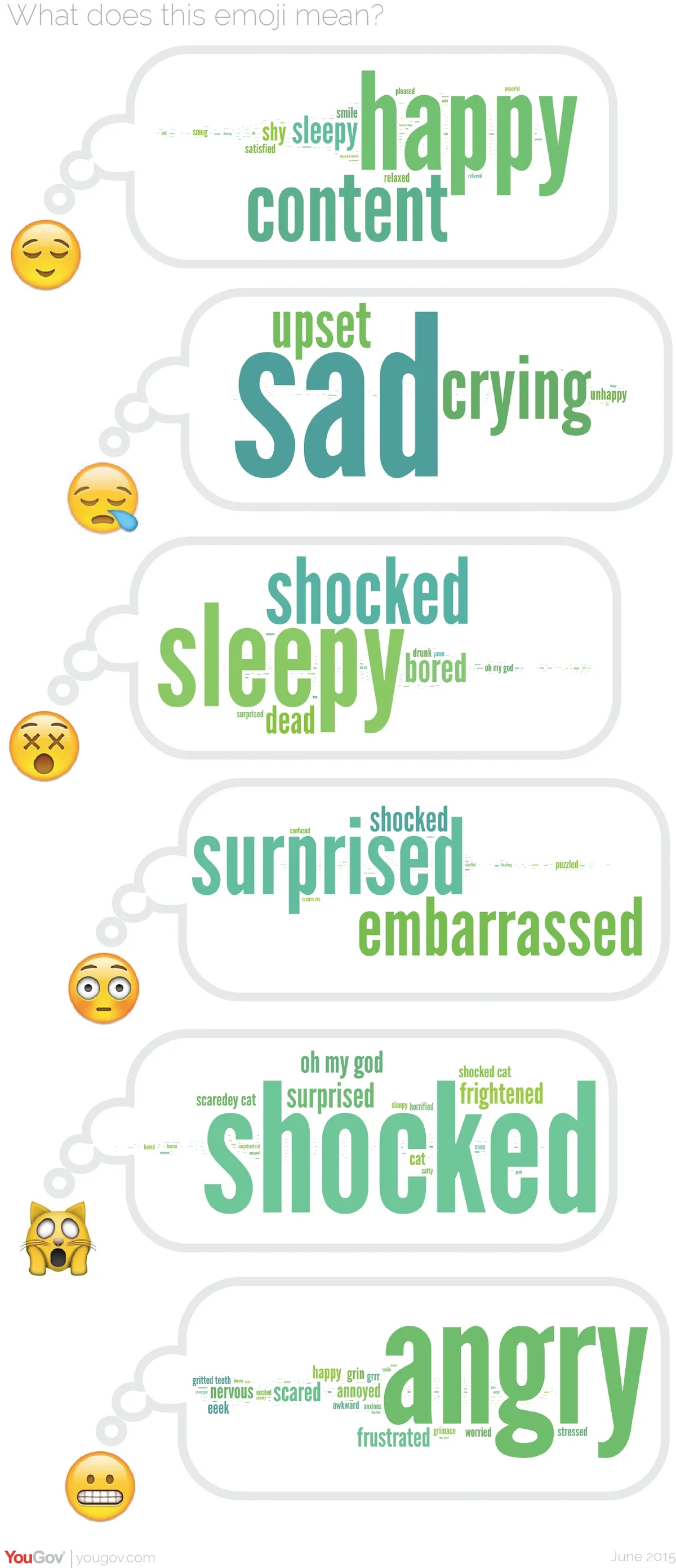The are many different interpretations of different emojis – and some vary widely from the 'intended' use
Emoji – small images used to express ideas or emotions in digital communication – may be the world's first truly global language. First developed in Japan in the '90s to mimic face-to-face gestures, and overcome communication breakdown in the transition from letters to email, a set of around 100 emojis are now used worldwide to convey a significant portion of human emotion.
But this adaptability also creates a great deal of misinterpretation. YouGov has captured the ambiguity by asking British people to say in one word what six commonly used emoji mean.
There is the greatest agreement on the second emoji below, with 1386 out of 1488 people interpreting it as 'sad', 'crying', 'upset' or 'unhappy'. According to the group who set the standards for emoji, however, it doesn't mean any of these – 'Sleepy Face' is it's official definition, and the drip is actually a bubble coming out of the nose used in Japanese animation to denote sleep.

Greater confusion is added by the different designs used for the same emoji across different mobile platforms. There is little consensus on what the third emoji above means, and this only looking at the Apple/WhatsApp version – as you can see below, on Android and Windows the emoji has a much clearer depiction of dizziness, it's official definition.

There is least agreement on 'Grimacing Face' (bottom in the chart above). 419 people say it means 'angry', but then various other interpretations are spread thinly across the rest of the population, covering 'frustrated', 'scared', 'nervous', 'happy', 'eeek' and 'grin'.
Apple recently added racially diverse emojis to its mobile operating system. Rather than the default yellow skin tone, some emojis, if held down, offer users a range of colours from white to black, with varying hair colours too.













